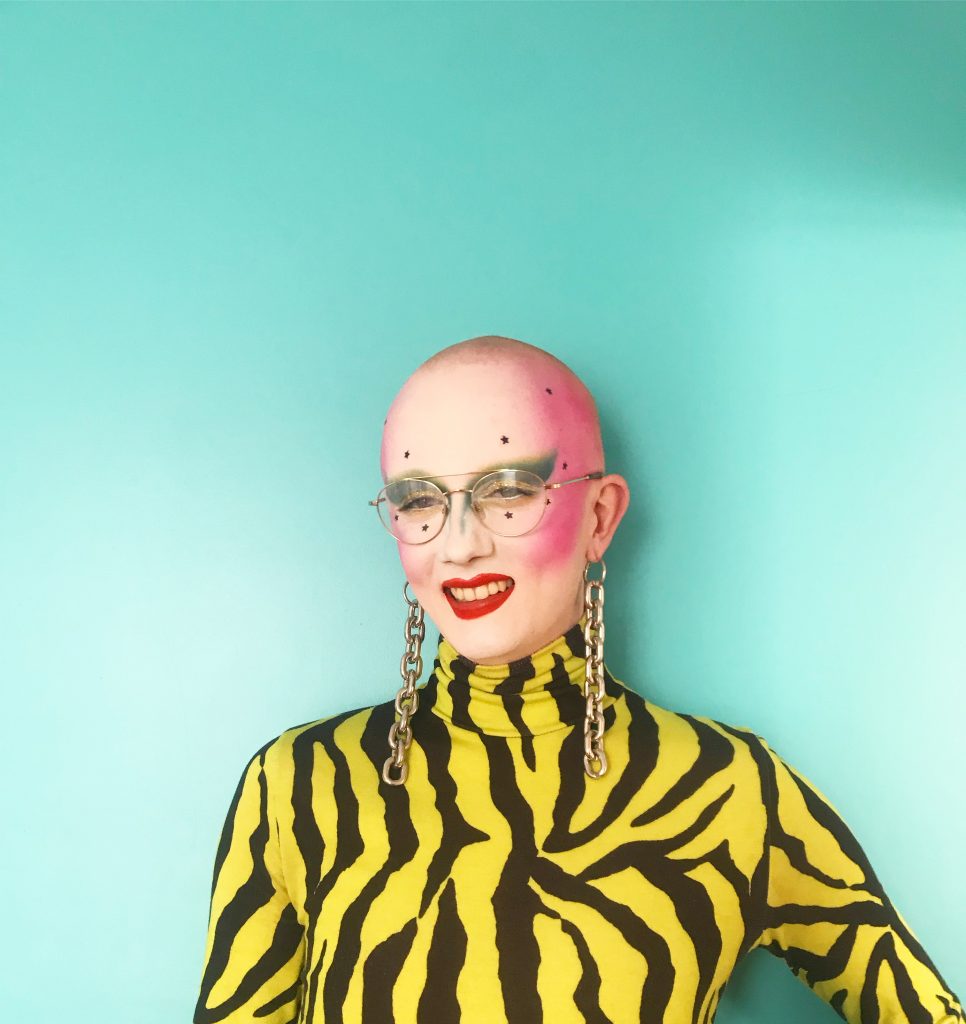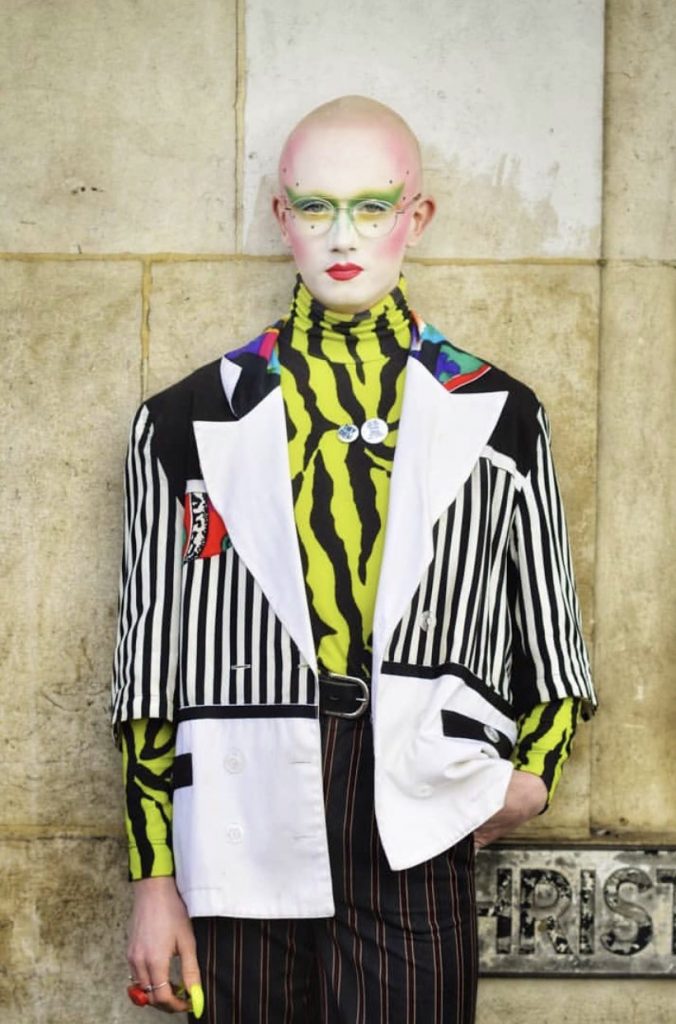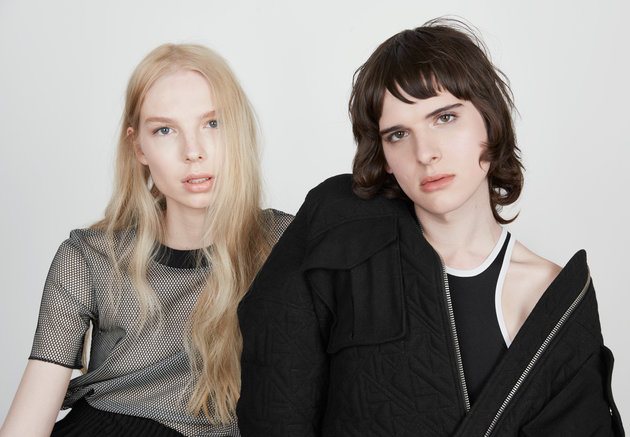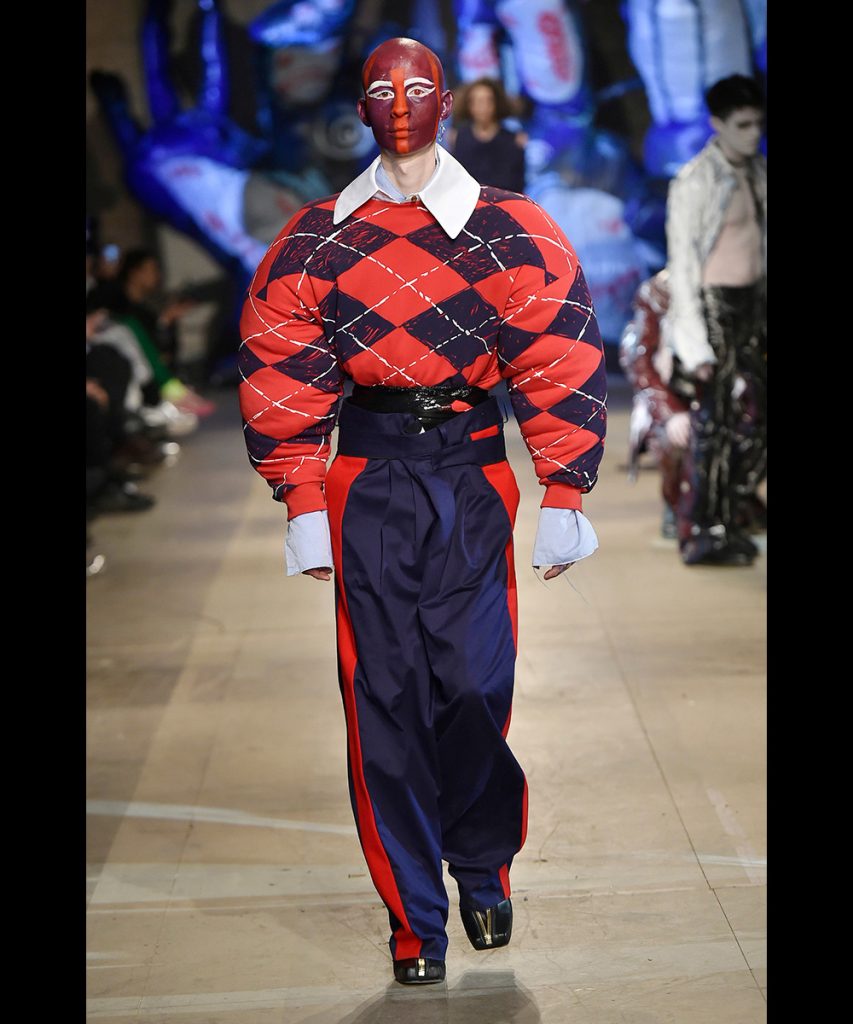The Editor in chief of FRUITCAKE magazine and public speaker talks LGBTQIA+ representation in fashion with Georgina Ripley, Curator of Body Beautiful: Diversity on the Catwalk
GR: How would you describe yourself?
JW: I am very bright, let’s just start there. I’m a person who has a lot of colour and a lot of frivolity and recklessness about them that I think is fun. And I have a kind of disruptive quality and personality to what I do, so it’s quite Avant-Garde. I think a bit of just a “why not” attitude is what I rock n’ roll with a lot of the time.

GR: That’s a great description. You said in an interview with LOVE magazine that one of the main inspirations when creating FRUITCAKE is knowing that you’d have needed and loved a publication like that when you were younger. Could you tell us a little about the genesis of the magazine?
JW: Yes, I definitely harboured thoughts about it for a long time before I even decided to do it; it was something that I knew we needed, but I never really thought it would be me who would create it. It started after working for the charity Stonewall UK and realising over that summer period during Pride that there was still a lot of work to do, especially within the media – at that time there was a lot of transphobia boiling up from global media institutions.
That correlated nicely with my final degree (Fashion Management & Marketing, University of the Creative Arts) project – I was allowed to create any form of business that I wanted, so I put two and two together and then spent four months researching the magazine industry at large, looking at gaps in the market, the financials of it, the business side of it, and then after January it went into creation.
I started the project knowing that I wanted it to be a legitimate business and I think because I knew that from the very beginning, I held it very dear and I’ve got a lot of passion and drive for this. It’s been difficult, but it’s – like you say – it’s that need or want to have something that wasn’t there when I was younger, because I know that the readers are a lot younger than me, which is really fulfilling.
GR: The exhibition considers the importance of the fashion industry becoming more diverse behind the scenes. How do you see the impact it’s had creatively on FRUITCAKE that it’s written by and for the LGBTQIA+ community?
JW: What’s really interesting for me is that the people who submit work are often very tentative and they can have a lot of self-doubt, which I think comes from a mixture of things – either owing to age, or maybe because they’ve not been published before; but also I think it’s that level of being the under-dog as a queer person. You feel like what you’re doing is not actually good enough. FRUITCAKE allows people to feel confident in the work they’re submitting, that it is valid to be published, because a lot of people then go on to create work for other magazines. I like to think that FRUITCAKE has not only given them a physical platform but also given them the headspace to believe that they can make a viable career out of editorial.
GR: I feel like it’s this huge thing, to say ‘I’m going to do a magazine’.
JW: The fact that it’s a platform that resonates with a lot of people is important to me. I still have quite a lot of imposter syndrome about it, because it’s just a bit wild it’s just me, I don’t have a team. I do the socials and the physical design of the magazine, and the distribution…It’s just something that I push and I continue, and it’s something that I do three or four times a year and I just relax with it. I don’t like to conform and have lots of strict rules around when it needs to be out, because for me that’s not what it’s about. It’s about making sure that it has the best and most diverse range of work possible.
G: It’s also important in terms of representation as well – being able to see yourself represented in the media, and the impact that has on feelings of self-worth and mental health.
JW: Yes, I have a lot of readers from my hometown that are 12, 13 years old, who have sent me messages saying it’s bizarre to see such representation from such a small town. I think that’s why I wanted it to be a print magazine, because it’s tangible – you can physically see and hold the representation rather than having it online, which can be more disposable.
G: You were recently in Dazed Digital talking about why clothing is political for non-binary people. Obviously, fashion and gender have quite a complex relationship – could you tell us a little bit about what fashion means personally for you and for your identity?

JW: I think for me fashion was one of the first ways that I explored gender. I was kind of questioning it, and I think for a lot of people that’s quite common; to just play with it, to have a bit of fun. It’s a suit of armour for me and it’s a way to further express myself in a way that I feel comfortable doing. That does come with problems, because it makes me quite visibly queer and visibly gender non-conforming – which for me is not a bad thing, but it does lead to quite a lot of prejudice; although that would never stop me.
In that interview we were talking about how just existing outside public spaces is a political act – essentially, me being non-binary is a disruptive act, because all the institutions that we live upon and live within aren’t tailored to us, or for us. To actively pursue a life that is carving your own path is very political.
G: Which actually leads us into one of the issues that the exhibition touches upon – do you think it would help people who are, as you’ve said, carving their own path, for the catwalk and other aspects of the fashion industry to represent non-binary and transgender narratives in more meaningful ways? There’s some criticism currently that representation can verge on being tokenistic, and that it doesn’t always feel particularly authentic.
JW: I think it’s about making sure that the team behind the scenes – and from the very start of the production – are inclusive of trans people. I think, like you say, we fall into problems when the whole process is created and then at the very final stage, they decide to include trans models. Although that is visible representation, it doesn’t necessarily mean that they’re going to be in an inclusive and safe environment.
I was listening to Munroe Bergdorf speak the other day, and she said we need to stop putting trans and non-binary models into shows that are representative of the large-scale ratios in which we exist. For example, we’re quite a small minority. Therefore, in a catwalk show of, say, twenty models, to put one of us in does unfortunately represent the ratio in which we do exist in wider society, but then people feel that by submitting and aligning themselves with that ratio they’ve ticked the box.

You’ve got fashion shows in New York like those by Opening Ceremony and Gypsy Sport, who have full shows with all trans models – for Opening Ceremony’s show last season everybody from the print designers to the designers, to the models and the hair and make-up team, were all queer and I think that’s a great example of how it’s not difficult to do inclusion and also do a show. I think sometimes people feel like if you do inclusion it detracts from the moment of the fashion, or of the show and that’s not what it’s about.
G: I’m really glad you mention Gypsy Sport and Opening Ceremony – we have the look worn by Desmond Is Amazing from the Gypsy Sport Autumn/Winter 2017 show in the exhibition.
JW: Amazing!
G: I do think it’s interesting how we tend to disassociate fashion from the body, when clothing is worn on the body. There’s always been this idea of the fashion model as a “clothes hanger” who’s supposed to be invisible, but why?
JW: I was at London Fashion Week this weekend and for example, you’ll see shows by Asian designers and the casting might be all white, straight, cisgender European women. It’s not the designer’s fault, it’s the fact that the institution, or the group, haven’t thought about diversity – they just think, like you say, that these are just people to wear the clothes, but people nowadays can see through that.
G: How would you like to see representation change, or how do you think it can develop in future?
JW: I think representation at large needs to be in a position where it doesn’t just come in at the end, which is what happens now – trans and non-binary people are either included at the end or in June for Pride month, and that’s basically it. It’s about making sure that trans and gender non-conforming people are given the opportunity to go into institutions at the powerful levels, to be able to make those decisions before people make them for us – and then make poor decisions.
That’s why everyone who’s involved with FRUITCAKE is queer, and I make sure that the voices I’m putting in are authentic. I never speak over people. We get submissions from people who have a different lived experience, for example people of colour or disabled people, people who have serious mental health issues – when they write in I always say to them, ‘please just say what you need to say here.’ I don’t edit people’s words, because it’s a space where they’re free to say what they want, and I think that’s really important.
#BodyBeautifulExhibition
Discover how today’s fashion industry is challenging perceptions and championing alternative ideals of beauty on the catwalk, in advertising, editorial and behind the camera.
Body Beautiful: Diversity on the Catwalk is on at the National Museum of Scotland until 20 October 2019.

LGBTQIA+ stories have often been left out of mainstream history and we are keen to make them more visible through stories told by our objects, LGBTQIA+ voices in the museum and by bringing in external perspectives. Explore the stories so far.
And if you want to help us tell these stories, send us a pitch!
